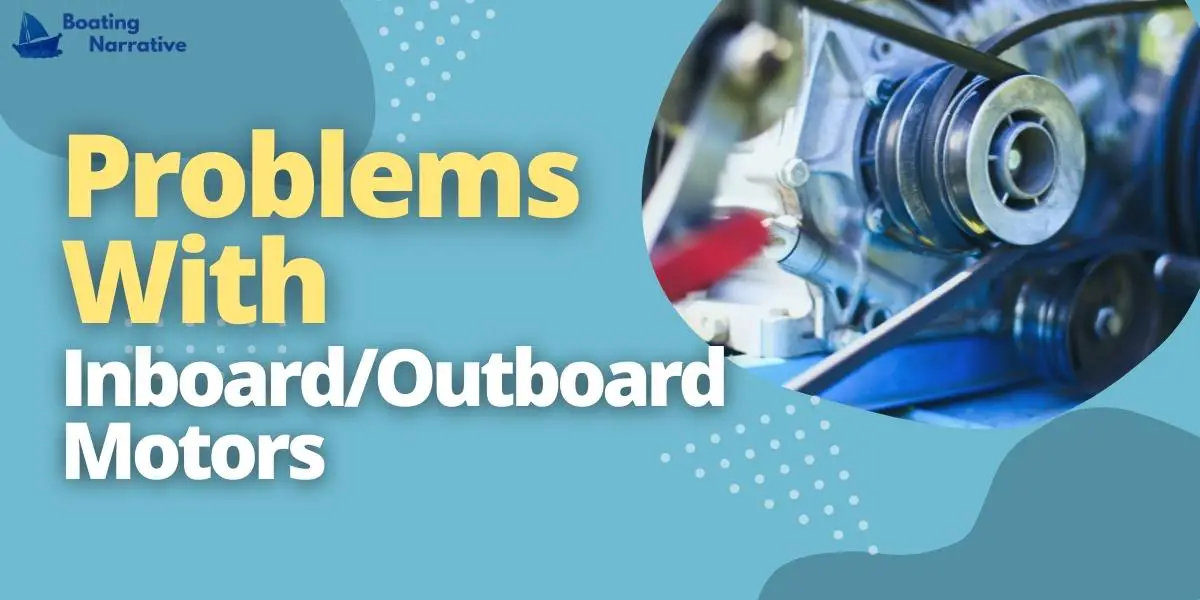If you’re not familiar with boats, you’ll want to be aware of problems with your current boat. You don’t want to spend your hard-earned money on a boat that will have problems.
When considering purchasing a boat, you may consider the purchase price and the cost of operation. But do you think about the problems that may arise when operating the boat?
In this blog post, I will cover some of the problems you may run into when using an inboard/outboard motor.
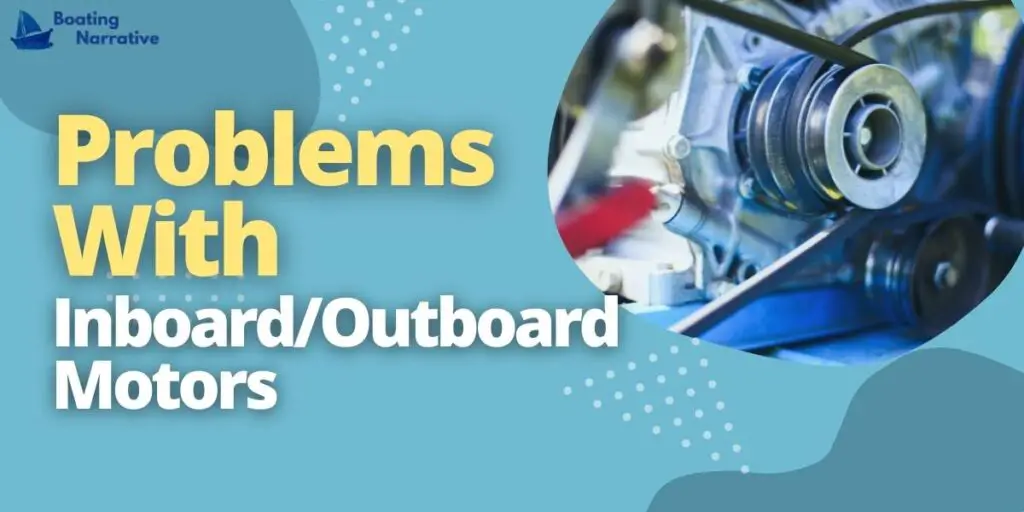
Here’s The Answer To What Problems Can Occur With Inboard/Outboard Motors:
While problems with inboard/outboard motors are rare, there are certain preventative measures that you can take to help avoid issues.
Most inboard and outboard motors can be traced to problems with a lower unit, electric shift, fuel, or carburetor systems. Inboard/Outboard Motors includes several components, and each one can experience problems.
List of Common Problems with Inboard/outboard Motors
Motor overheating
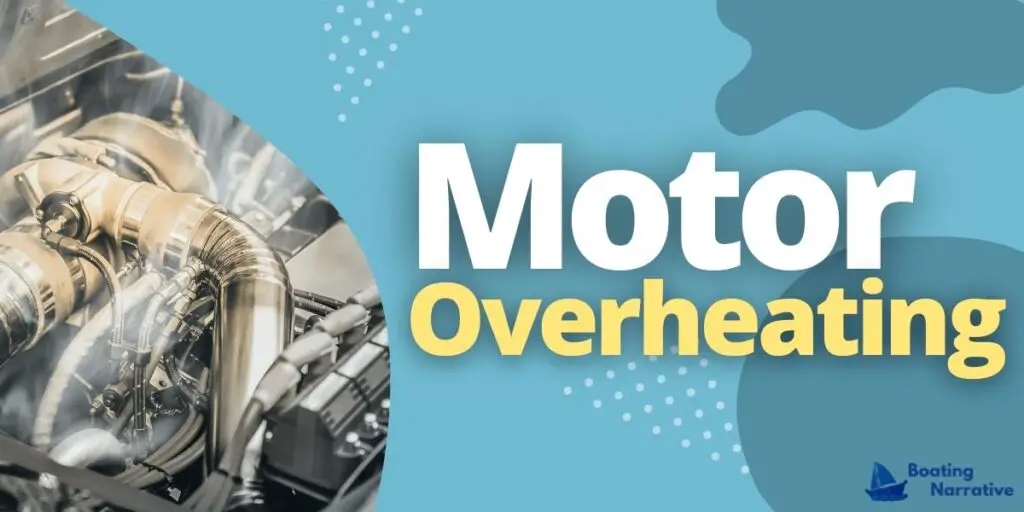
A common problem that boaters face is motor overheating. There are many distinct causes for this, but the most prevalent is a problem with the water pump. If the water pump isn’t working properly, it can cause the engine to overheat. Another reason for motor overheating is a blockage in the cooling loop. A piece of debris or a clogged radiator can also cause this.
- If you’re having issues with your boat engine overheating, you should first check the water pump.
- If it’s not working properly, you may need to replace it.
- If the water pump is fine, the next step is to check the cooling loop for any blockages. You can do this by removing the plugs and looking for any obstruction in the water flow.
- If you discover a blockage, you must clear it before the engine can cool down.
Propeller Problem
Propeller troubles are one of the most prevalent concerns that boat owners encounter. When a propeller becomes bent or damaged, it can cause steering problems for the outboard boat motors.
In some cases, the propeller may become completely detached from the motor. Fishing line is another common issue that can cause problems for outboard boat motors.
If the fishing line becomes wrapped around the propeller, it can cause the motor to overheat and eventually fail. Bad days on the water can also lead to engine problems for outboard boat motors.
Shallow water can also be a problem for outboard boat motors. If the boat is operated in shallow water, the propeller can become damaged by hitting rocks or other objects. Over time, this damage can lead to corrosion and pitting.
Bad Wiring Within the Engines
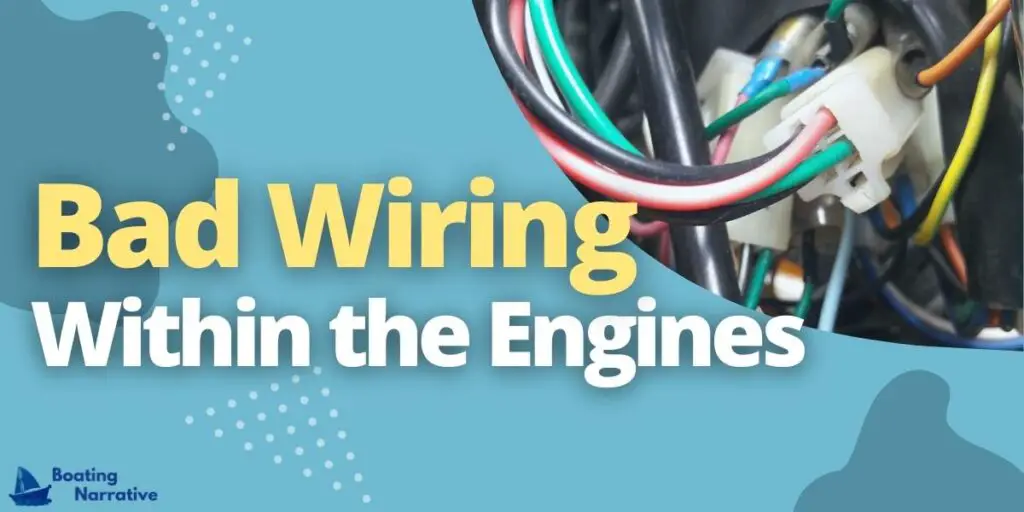
One of the most common problems with inboard/outboard motors is bad wiring within the engines. This can result in blown fuses and ignition troubles, among other things.
- To check for this, you’ll need to use a voltage meter to test the continuity of the circuit between the engine box and the ignition key.
- If there is no continuity, it’s good to replace the fuse or the ignition circuit.
Binding Gears in Motor or Transmission Shafts
One problem with inboard/outboard motors is binding gears in the motor or transmission shafts. This can happen if the boat is left in gear for an extended period, causing the gears to become seized.
This can be a major problem, as it can cause the boat to become stuck and unable to move.
If you think you may have a binding gear issue, it’s important to have a professional check it out. Attempting to fix it yourself could exacerbate the problem and even result in serious injury.
Ignition System Problem
One problem that can cause issues with inboard/outboard motors is an ignition system problem. This can be caused by moisture in the spark plug, a loose connection in the breaker, or a blown a fuse in the outboard engine.
If the ignition system is not working properly, it can cause the engine to stall or not start at all. Another problem that can occur is condensation in the accessories. This can cause the kill switch to malfunction or the boat motor to overheat.
Engine Oil or Water Leaks in Motor/transmission Housing
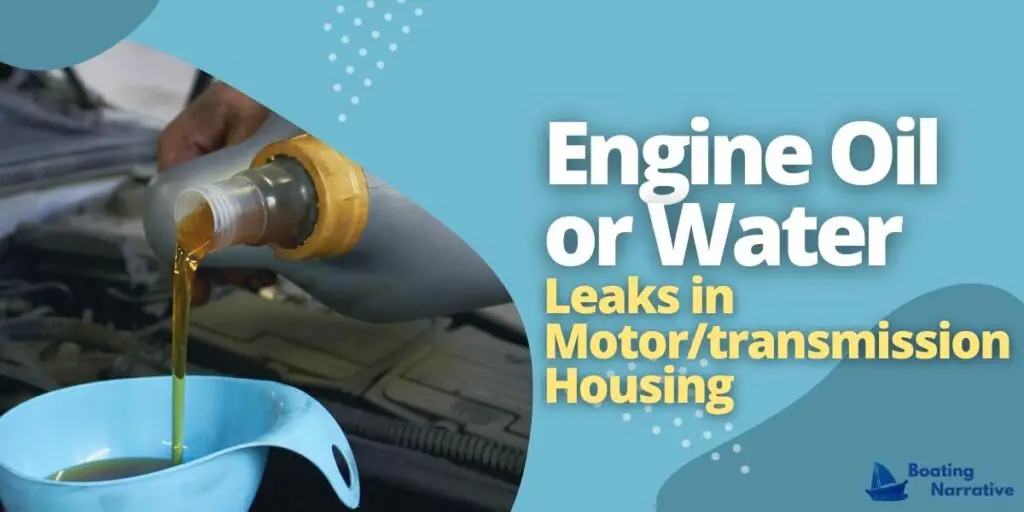
The problem with inboard/outboard motors is engine oil or water leaks in the motor/transmission housing. This can be caused by a malfunctioning impeller, valve, or filter element, among other things.
It can also be caused by a problem with the fuel supply, fuel filter, or hose. Another possibility is a problem with the cooling system, such as a clogged water intake or coolant leak.
It’s critical to get your inboard/outboard motor checked by a trained technician if you notice engine oil or water leaks. They’ll be able to figure out what’s wrong and make the required repairs.
Worn Bearings in Motors and Transmissions
Worn bearings can cause a lot of vibration and distortion and can eventually damage the shaft. However, bearings are usually only a problem on boats that have high miles or on small boats that are used a lot.
Worn bearings can cause a decrease in fuel efficiency of up to 10%, And approximately 33% of inboard/outboard motors have worn bearings, as mentioned by Indian Maritime University.
So periodic inspection is the only solution to this problem.
Debris in The Engine/prop Shafts Causing Problems
One of the most common problems with inboard/outboard motors is debris getting into the engine or prop shafts and causing problems. This can be a big issue if you’re buying a used boat, as you may not be aware of any previous damage that could have caused this issue.
- Often, debris can cause a broken belt or other issues with the inboard engine, which can be very costly to repair.
- In some situations, it can even harm the transom (the back part of the boat where the engine is mounted).
Improper Boat Maintenance
Improper boat maintenance is one of the leading causes of engine failure. Some of the things you need to do to maintain your engine include: checking the battery, checking the pulleys, checking the anchor, checking the hull, and checking the fuel lines and fuel levels.
You also need to regularly clean the engine, including the contact surfaces. In addition, you should winterize your engine if you live in an area with cold weather.
Proper maintenance of your inboard/outboard motor will extend the life of your engine and is cost-effective in the long run.
Motor Losing Power
Your inboard or outboard engine may lose power for a variety of reasons. A damaged drive belt is one of the most typical reasons for this.
If the drive belt is broken, it can cause the engine to lose power. Another reason why your engine might lose power is because of the type of engine you have. Some engine types are more fuel-efficient than others.
If you have a less fuel-efficient engine, it might lose power when you’re trying to go fast. Finally, if you’re boating in salt water, the salt can corrode the engine and cause it to lose power.
- If the drive belt is broken, it can cause the engine to lose power.
- If you have a less fuel-efficient engine, it might lose power when you’re trying to go fast.
- If you’re boating in salt water, clean the engine regularly to prevent corrosion.
Are Inboard Outboards Reliable?
When considering the dependability of inboard outboards, there are a few factors to consider.
- Inboard outboards are typically used in saltwater, which can be tough on engines.
- They’re also out in the weather, leading to corrosion and other issues.
- In addition, inboard outboards are often utilized for longer periods of time than other types of engines, resulting in increased wear and strain.
That being said, inboard outboards can be reliable if they are properly maintained.
- After each usage, flush the engine with fresh water, especially if exposed to saltwater.
- The engine should also be regularly serviced by a qualified technician.
- It is also important to use high-quality fuel and oil to help extend the engine’s life.
How to Detect Inboard/outboard Motor Problems
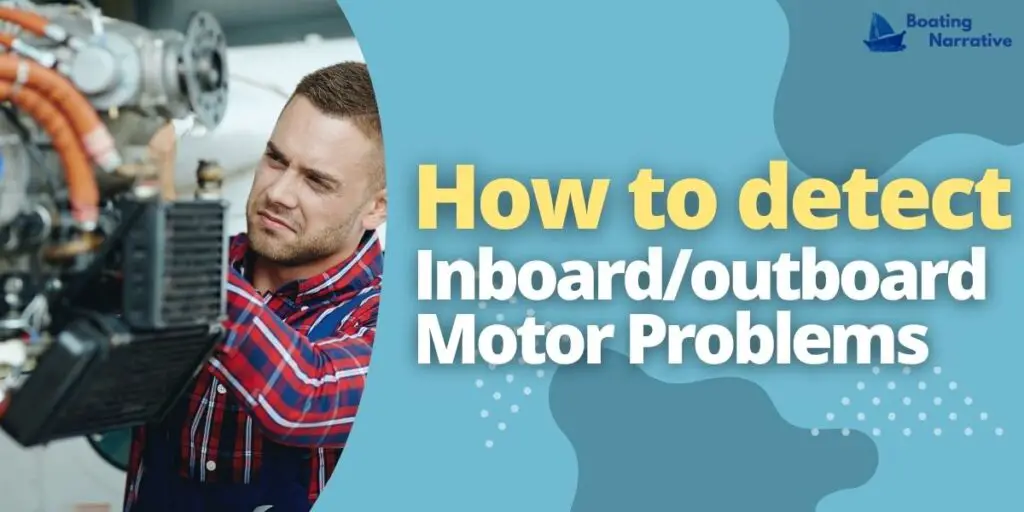
It is important to detect inboard/outboard motor problems early before they cause damage to your boat. There are a few things you may look for to see if there’s a problem with your motor.
First, check the oil level and color. If the oil is low or dirty, this could signify that the motor is not getting the proper lubrication it needs. Second, check for leaks.
If you see any oil or fuel leaks, this could be a sign that there is a problem with one of the seals or gaskets. Third, check the engine temperature.
If the engine is running hot, this could be a sign of a problem with the cooling system. Finally, listen to the engine for any unusual noises. If you hear any unusual noises, it could indicate a problem with the engine’s bearings or other internal components.
How to Fix Common Inboard/outboard Motor Problems
If you’re having trouble with your inboard or outboard motor, there are a few things you can do to try and fix the problem yourself.
Here are some tips on how to fix some of the most common inboard/outboard motor problems:
- If your boat is having trouble starting, make sure the battery is fully charged and that the connections are clean and tight.
- If the boat is running rough, check the spark plugs and replace them if necessary.
- If the boat is overheating, check the cooling system for leaks or blockages.
- If the boat is losing power, check the fuel system for leaks or blockages.
- If the boat is making strange noises, have a mechanic check it out to diagnose the problem.
What Tools Do You Need To Repair Your Inboard/Outboard Motors?
If you’re planning on doing any work on your inboard or outboard motor, you’ll need the right tools.
- You’ll need a set of wrenches. You’ll need various sizes to reach all the nuts and bolts on your motor. You’ll also need a set of screwdrivers. Again, you’ll need various sizes to reach all the screws on your motor.
- You’ll need a set of pliers. You’ll need these to grip and remove parts from your motor. You might also require a pair of wire cutters to eliminate any stray wires.
- You’ll need a set of sockets and a ratchet. This will allow you to reach any bolts that are in hard-to-reach places.
You should be able to perform most basic repairs on your inboard or outboard motor using these tools. If you need any specialized tools, you can usually rent them from your local marina or boat shop.
How Long Do Inboard Outboard Motors Last?
Inboard outboard motors are designed for durability and long-term use. However, like any engine, they will eventually need to be replaced. On average, inboard outboard motors will last for 15000 hours before needing to be replaced.
This varies based on the engine’s brand and model and how well it is maintained.
Engines that are well-maintained and used regularly will last longer than those that are not. Therefore, following the manufacturer’s recommended maintenance schedule is important to keep your engine top condition.
This will help to extend its life and prevent costly repairs.
A few things can shorten the lifespan of an inboard outboard motor. These include:
- Using the wrong type of oil
- Overheating
- Not changing the oil regularly
- Running the engine without proper cooling
If you take care of your inboard outboard motor, it will care for you. By following the recommended maintenance schedule and using the proper type of oil, you can help to extend the life of your engine.
Inboard/outboard Motors: Winterizing Your Motor
It’s important to winterize your inboard/outboard motor properly to ensure it will work properly when you need it the most. Here are a few tips on how to winterize your motor:
- Drain all the water from the motor, including the water from the cooling system.
- Remove the spark plugs and spray fogging oil into the cylinders.
- Turn the engine over a few times to distribute the oil.
- Replace the plugs and reconnect the wires.
- Fill the gas tank and add a fuel stabilizer.
Conclusions
If you’re having problems with your inboard/outboard motor, you’re not alone. Numerous problems with these motors have been reported, ranging from poor performance to catastrophic failures.
As discussed, some of the common issues that occur with these motors, and we have provided tips on how to prevent them and how to troubleshoot them if they do occur.
We have also provided helpful tips on choosing the right motor for your needs and how to properly maintain it to avoid these issues. Stay tuned for more updates!

